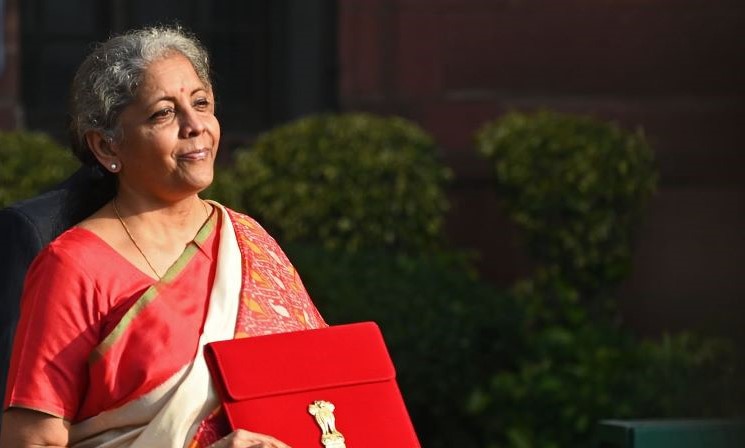The Centre announced an additional allocation of ₹1,000 crore to the Solar Energy Corporation of India (SECI) in this year’s budget, which would allow it to float 15,000 megawatt (MW) of tenders on a yearly basis. It added that SECI would attract investments of more than ₹60,000 crore annually and reduce emissions of 28.5 million tonnes of carbon dioxide per year.
The Indian Renewable Energy Development Agency (IREDA) was allocated ₹1,500 crore. The Centre said this would help IREDA to extend an additional loan facility of ₹12,000 crore, which would be in addition to its existing provision of ₹27,000 crore, finance about 4,500 MW of renewable energy projects worth ₹18,000 crore to ₹19,000 crore and reduce emissions of 8.55 million tonnes of CO2.
The government proposed the launch of the National Hydrogen Mission for generating hydrogen from green power sources. The draft of the Mission document is expected to be finalised in February 2021, after which it would go through an inter-ministerial consultation and a Cabinet approval process.
India’s solar, wind capacity addition lowest in five years in 2020
India added a total solar and wind capacity of only 4,908 megawatt (MW) in 2020, the lowest in the past five years, according to a Bridge to India report. Capacity addition for utility-scale solar and wind was 2,620 MW and 1,309 MW, down 60% and 40% year-on-year, respectively. Rooftop solar installations were down at 979 MW, 36% below previous year installations.
Pandemic induced operational and financial challenges were the main reasons for the slowdown. Increase in solar modules prices as well as metal costs in the past few months, and delayed shipments from China also contributed to the low targets. The researchers expect total capacity addition of about 29 GW in the next two years taking total capacity by the end of 2022 to 123 GW.
Now Hydropower Purchase Obligation also part of government’s RPO targets
Hydropower will now be included in the renewable power obligation (RPO) targets of discoms. To achieve the target of 30 GW of hydropower by 2029-30, the government has issued a revised trajectory of RPO, including a long-term trajectory for hydropower purchase obligation (HPO) for projects commissioned after March 8, 2019, Mercom reported.
The new norms calculate RPO in energy terms as a percentage of total electricity consumption, excluding the consumption met from hydropower sources. The solar RPO target may be met by power produced from solar power projects. Other non-solar RPO (excluding HPO) may be met from any renewable source other than solar and large hydropower projects.
IEA: India’s solar energy power to match coal-fired output by 2040, to lead world in battery storage
The International Energy Agency (IEA ) in its India Energy Outlook 2021 said the share of solar energy in India’s power generation could equal coal-fired output by 2040. This will be driven by falling renewable tariffs and a government target to reach 450 GW of renewable capacity by 2030. India has the potential to become a world leader in battery storage, the IEA said, adding the country could add 140-200 GW capacity of battery by 2040.
But the country’s CO2 emissions could rise as much as 50% by 2040, the largest of any country, enough to offset entirely the projected fall in emissions in Europe over the same period, IEA said. That would also make India the second-largest emitter of carbon dioxide, trailing only China.
China raises minimum renewable power purchase to 40% by 2030
According to a draft policy document, China will force grid companies in its provinces to buy at least 40% of power from non-fossil fuel sources by 2030 in order to meet the country’s climate targets, Reuters reported. The regional firms will steadily increase the amount of power purchased from clean generation sources from 28.2% in 2020 to 40% by 2030.
China pledged to go carbon neutral by 2060 and said it would boost the share of non-fossil fuels in primary energy consumption to around 25% by 2030 from a previous commitment of 20%.
Power procured from non-hydropower renewable sources will reach a minimum of 25.9% by 2030, up from 10.8% last year, according to the draft plan. This means China will rely on solar and wind to meet its renewable goals, and move away from the large-scale hydroelectric projects. China plans to boost its installed capacity of wind and solar power to more than 1,200 gigawatts (GW) by 2030.
About The Author
You may also like
World, led by China, added 50% more RE capacity in 2023 than in 2022: IEA report
Renewables, not coal, the energy of choice for investors in India for second year in a row: Report
Hope to raise $50 million for solar in next few months; focus on Africa: ISA chief
About 6 lakh new technicians needed globally for wind energy sector by 2027: Report
12% of global growth in solar generation in first half of 2023 came from India: Report


